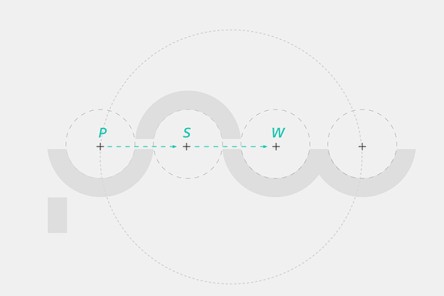At minus 27 degrees Celsius, I lie on a bend on a frozen lake in Sweden, waiting with my camera for the perfect moment. My hands are shaking. My stomach is numb. Just then, the new Audi Q8 drifts around the bend with a cloud of snow and ice behind it. As it roars past me, I press the trigger. A short distance in front of a crash test dummy made of plastic, the vehicle brakes strongly and comes to a halt. The test run is a success.
Like a living organism, the cold bites through my four layers of clothing, including thermal underwear and grips my skin.
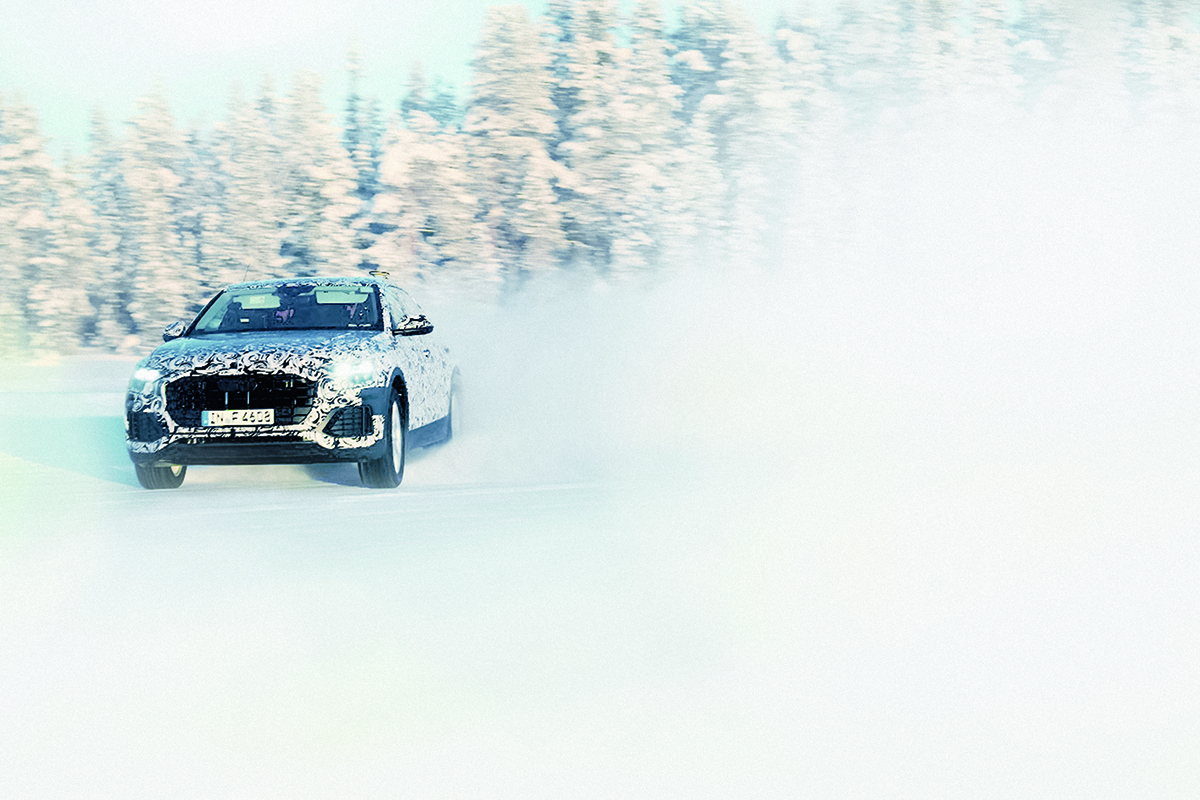
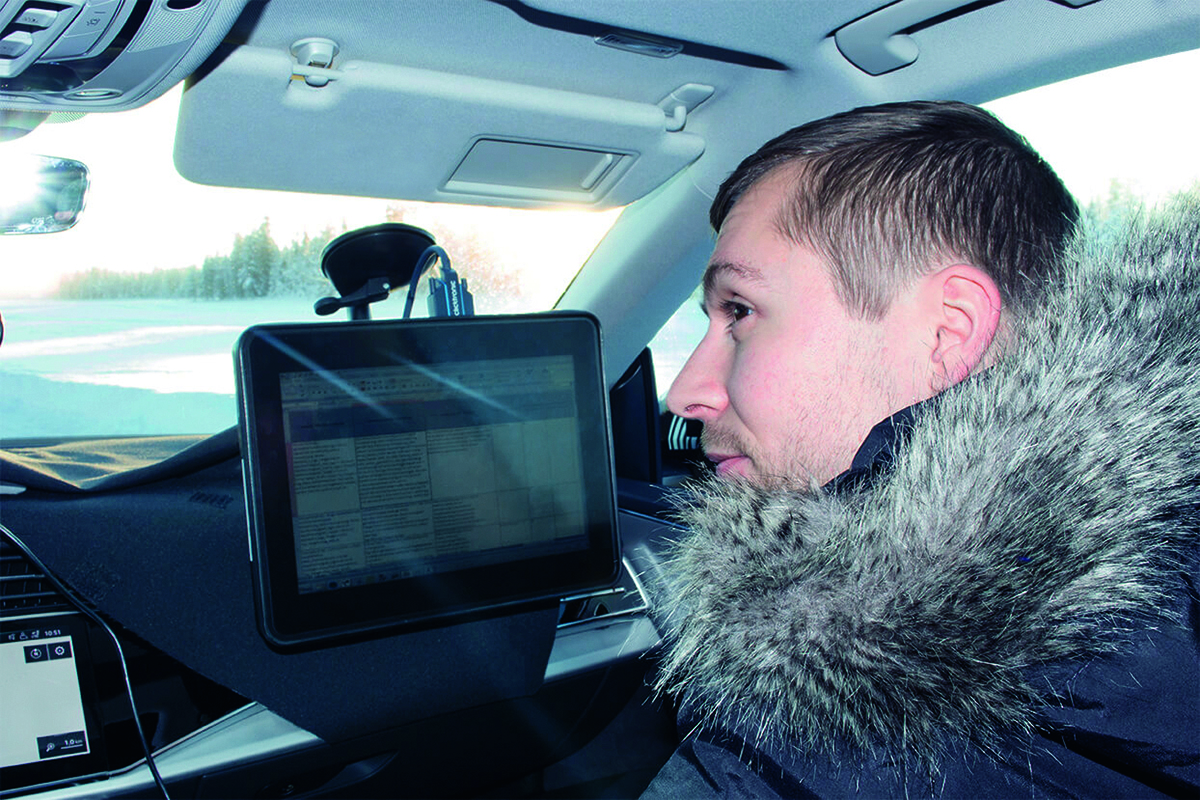
Cold shock: Frozen lake trials
Two hours earlier. I am standing in a garage on the secret testing grounds of the Volkswagen Group. Here, the Group tests its vehicles under extreme conditions on a huge frozen lake. For the next two days I am accompanying several PSW engineers performing cold testing. One of PSW’s core competencies is the vehicle integration of Audi pre sense. The engineers implement the system in the new vehicle, adjusting parameters such as length, width, performance and dynamics of the car. They then test the system using a test catalog that also provides testing in extreme conditions of cold.
For the next two days, we will be testing Audi pre sense front in the Audi Q8. This is an assistance system that identifies dangerous situations and if necessary, initiates measures such as emergency braking. Today we will be testing the system on the frozen lake, tomorrow during a road trip
Looking ahead: Audi pre sense
Audi pre sense front works as follows: A camera is installed behind the windshield on the rearview mirror, which looks 150 meters ahead. The camera sends data to the central driver assistance system and the airbag control unit, both analyze the current situation for hazards in just a few milliseconds. If an object represents a hazard, it is classified by the system as a risk of crashing. As soon as a dangerous situation occurs and the driver does not intervene in good time, the system initiates situational measures, for example emergency braking. In addition, the seat belts are tightened, windows and sunroof are closed and the seat is adjusted to an ideal position. This way, the risk of injury in the case of an unavoidable accident is minimized.
“Depending on how critical the situation is, the system responds. At the lowest warning level, the driver is warned by a visual signal in the cockpit. If it becomes really critical, emergency braking and tightening seat belts is deployed”, says Christian. But why are the engineers traveling hundreds of kilometers into the bitterly cold north of Sweden for testing? “The terrain offers ideal conditions. On the one hand we check the performance of automatic braking under extreme conditions. After all, the ground is extremely slippery. On the other hand we test the performance of the camera in difficult visibility conditions. Fog and snow are commonplace here. If the system works here, it will work elsewhere too,” he explains.
Impressions
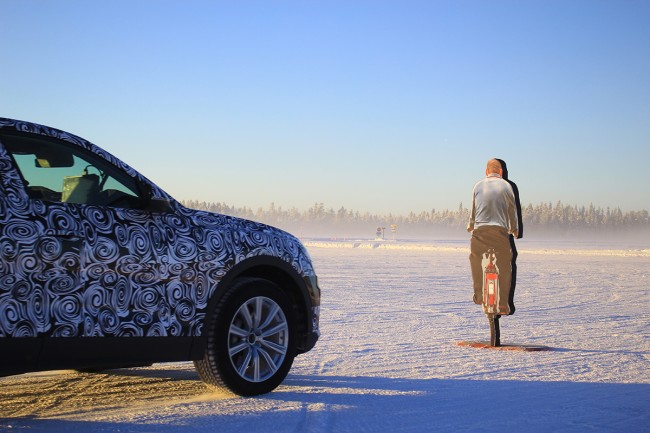
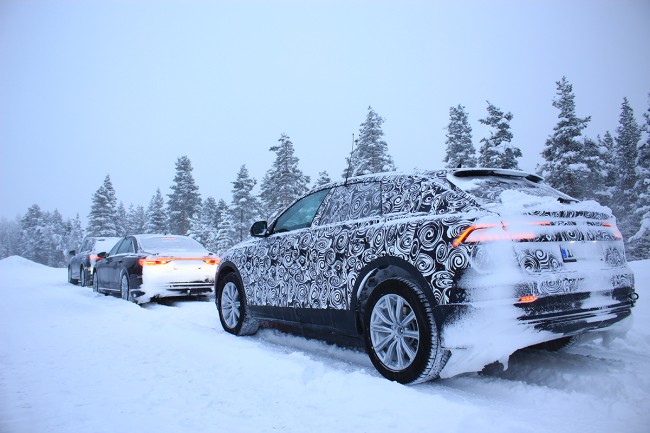
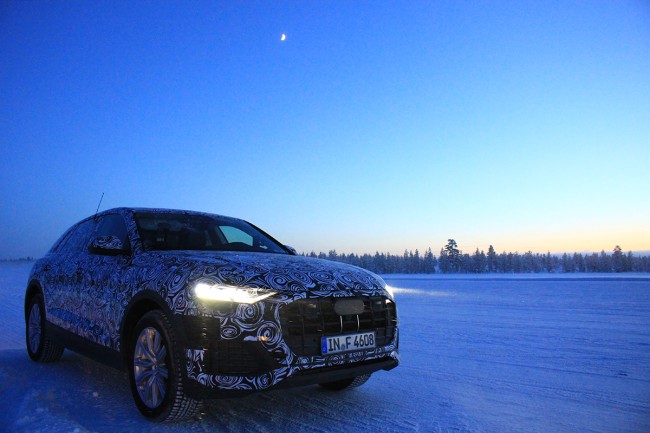
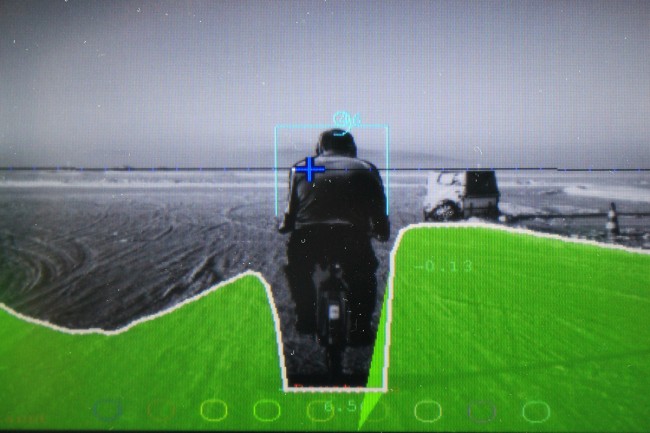
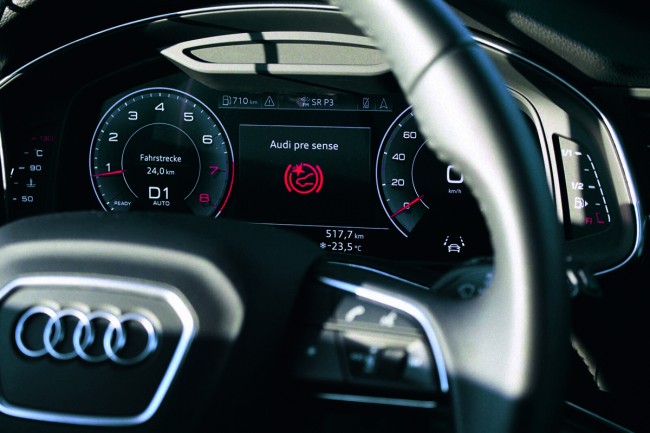
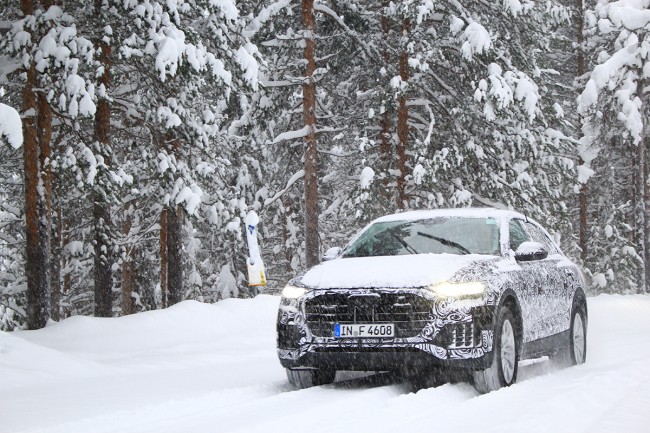
Experimental setup: Test dummy ahead
A few minutes later, we drive out of the garage and onto the frozen lake. We stop on a long straight and get out of the car. Immediately the cold hits me and I almost slip over, because the ground is so smooth. I walk cautiously over the ice to help Christian and his colleagues set up the experiment. A few hundred meters away, we place a plastic test dummy, which represents the rear of an Audi A1.
Back in the car we start today’s test run. Christian accelerates a little, the engine hums and we start briskly. Things then start to get exciting. The test dummy is getting closer. When we are just a few feet away, a red signal flashes in the cockpit and a loud sound is heard. A split second later I feel the brakes go on and shortly afterwards we make an emergency stop. My body tenses, ready for the impact, but we stop short of the test dummy.
If the system does not cause any malfunctions under these extreme conditions and the object detection works without errors, the test is successful
Performance test: Road driving with obstacles
The next morning it is snowing heavily and the visibility is bad, but Christian is looking forward to the ride: “The conditions are perfect. On today’s road trip, we’d like to see how well the camera manages with snowdrifts and poor vision. In front of us, two more vehicles will drive ahead, kicking up clouds of snow”, he says.
“If the system does not trigger a malfunction and object detection works faultlessly in these extreme conditions, the test is successful.”
As we leave the test center, I feel a bit queasy. The view is really bad and the two preceding Audis are barely visible. But the system does not let itself be confused. Christian sits on the passenger side during the trip and keeps an eye on the camera image and the function signals on a monitor. Back at the test center he draws a positive conclusion of the past days: “We have done a lot of testing and are very satisfied. Even the snow chaos during the road trip did not lead to a malfunction. In addition, object recognition was more than dependable.”
